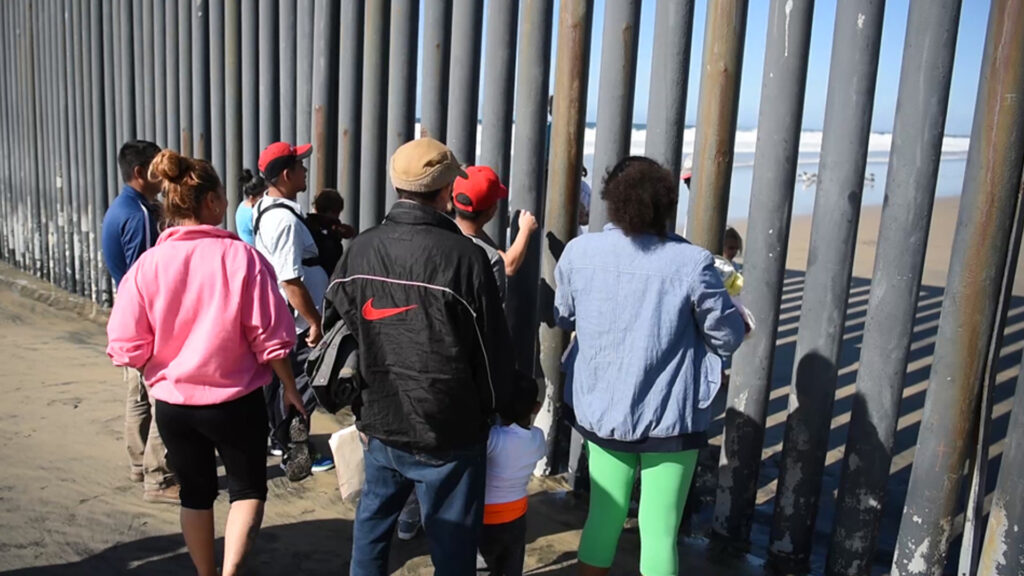By Mary Anna Mancuso, RepublicEn.org
Title 42 has expired, but that doesn’t mean migration to America has ended. Policy makers, candidates and other government officials are focusing on people at the border. But immigrants at the border are the symptom, not the problem.

Many point to political instability and gang violence as the main cause for people to flee their home countries. However, there is a larger contributing factor to the exacerbated immigration problem in America: climate change.
As the world grapples with climate emergencies, the number of climate refugees seeking refuge across international borders is poised to reach alarming levels. Climate refugees, a term used to describe individuals forced to leave their homelands due to climate-related factors, face a growing struggle for survival.
The United Nations High Commissioner for Refugees estimates that an average of 21.5 million people are forced from their homes around the world due to natural disasters. Droughts, rising sea levels and other weather-related disasters are rendering their lands uninhabitable, compelling them to seek refuge across international borders.
The United States has long been a melting pot of cultures and a beacon of hope for immigrants seeking better lives. However, in recent years, anti-immigrant sentiment has gained traction among certain segments of the population. The same individuals who harbor animosity toward immigrants may soon find themselves facing a new challenge that will test their resilience — climate change.
Millions of people are already grappling with climate emergencies, and this number is expected to skyrocket in the coming decades. The Institute for Economics and Peace estimates that by 2050, the world could witness an astounding 1.2 billion (yes, billion) climate refugees. While political debates often focus on immediate immigration challenges, it is imperative to address the underlying factors that drive people to migrate, such as the deteriorating environmental conditions caused by climate change.
Currently, no nation offers asylum to people displaced specifically due to climate change, even though, “environmental disasters now displace more people than conflict within their own countries.” The Biden administration has studied climate migration to explore options. However, they still have yet to develop a plan on how to address climate migration.
In a 2020 data model created by a partnership between The New York Times Magazine, ProPublica and the Pulitzer Center, they created a model, for the first time, to show how people will move across borders. Focusing on Central America and economic-development data coupled with climate data, the model projected migration will rise each year regardless of climate, however migration will increase exponentially as the climate changes. In the most “extreme scenario, 30 million migrants would head toward the U.S. border over the course of the next 30 years.”
The time for preparation and planning is yesterday, and the United Nations warns that without proper planning, and preparation the worst-case scenario is “governments of nations most affected by climate change could topple as whole regions devolve into war.”

As lawmakers saber rattle about securing the border, they continue to miss a crucial opportunity to address the underlying causes of immigration. Instead of closing borders and stoking fear, Congress should embrace the opportunities presented by a changing world.
By investing in renewable energy, sustainable infrastructure and climate adaptation measures, the United States can not only mitigate the impact of climate change but also create jobs and foster economic growth. By doing so, we can not only address the immediate challenges faced by individuals at the border, but also address the larger problem at its core.
Climate change knows no borders and will spare no nation, including the United States. While it is essential to address immediate challenges at the border, it is equally crucial to acknowledge and tackle the root causes driving immigration, something building a wall won’t solve.
By recognizing the urgent need for action, investing in sustainable solutions and offering protection to those displaced by climate change, lawmakers have a unique opportunity to attack this multifaceted crisis by positioning America as a leader on the world’s stage serving as a beacon of hope for other nations to follow suit. After all, isn’t that what a superpower does?
Mary Anna Mancuso is a political strategist based in South Florida and a spokesperson for RepublicEn.org, a growing group of conservatives who care about climate change. This piece was originally written for and published on RealClear Energy.
If you are interested in submitting an opinion piece to The Invading Sea, email Editor Nathan Crabbe at ncrabbe@fau.edu. Sign up for The Invading Sea newsletter by visiting here.



